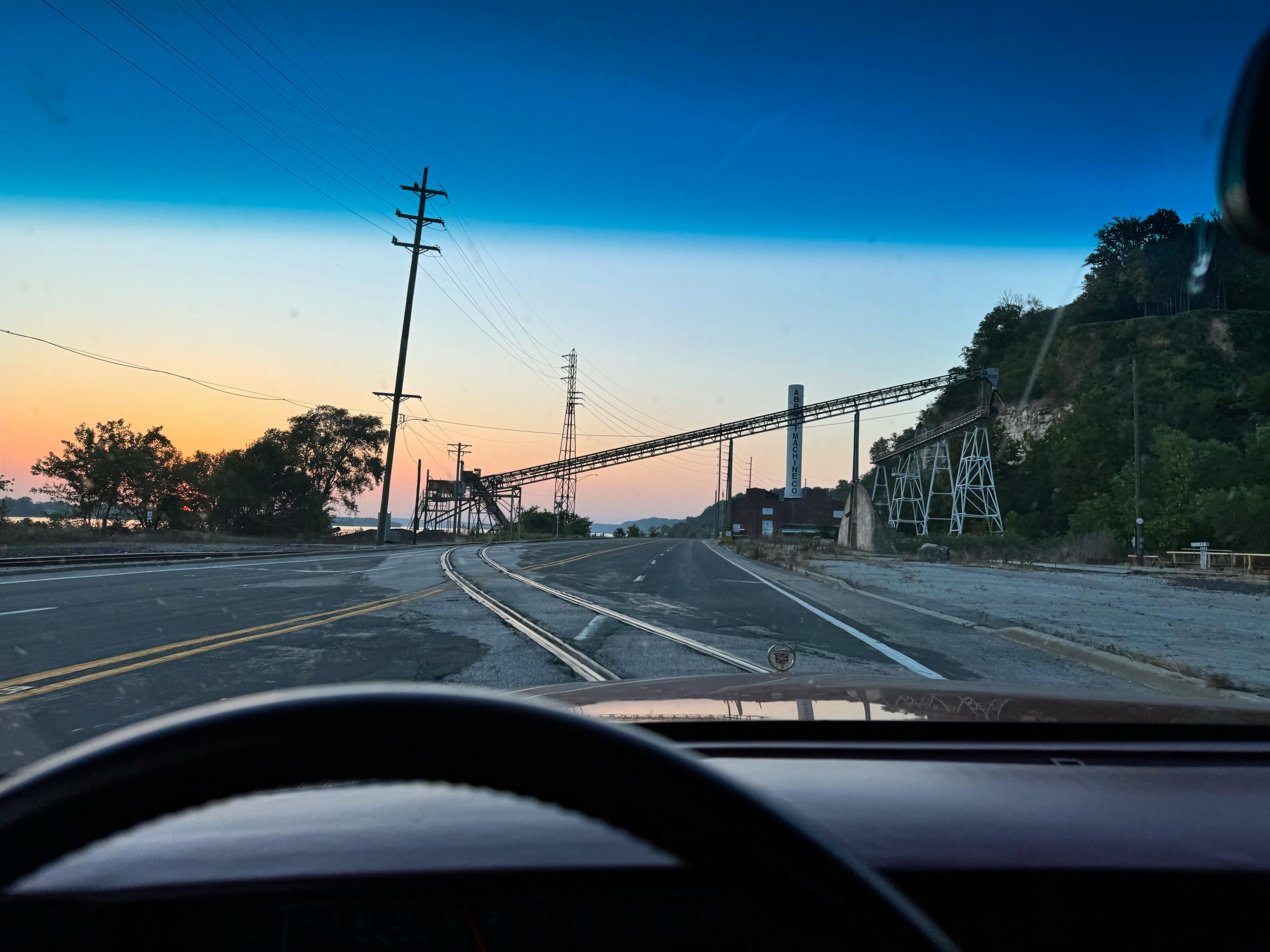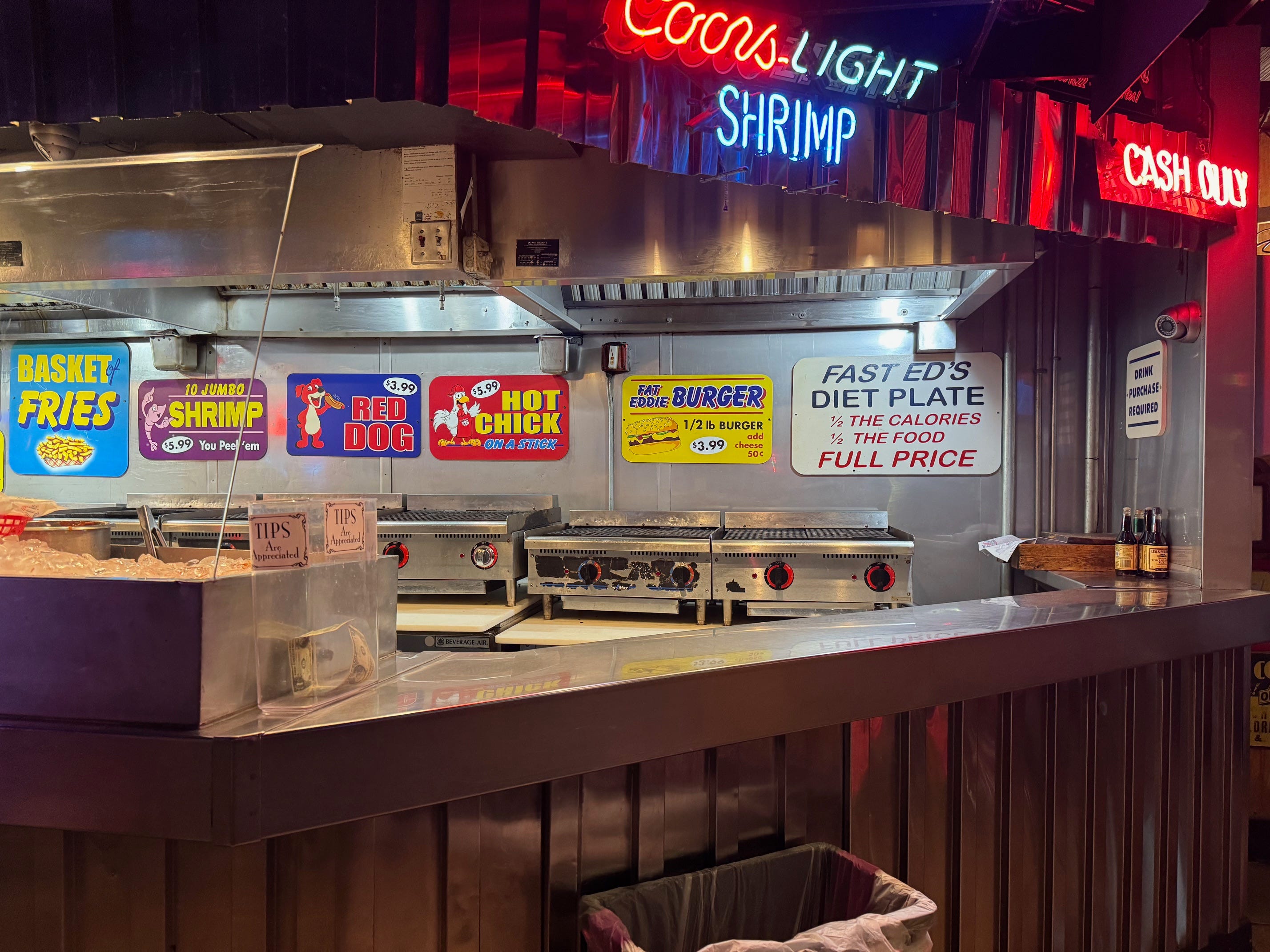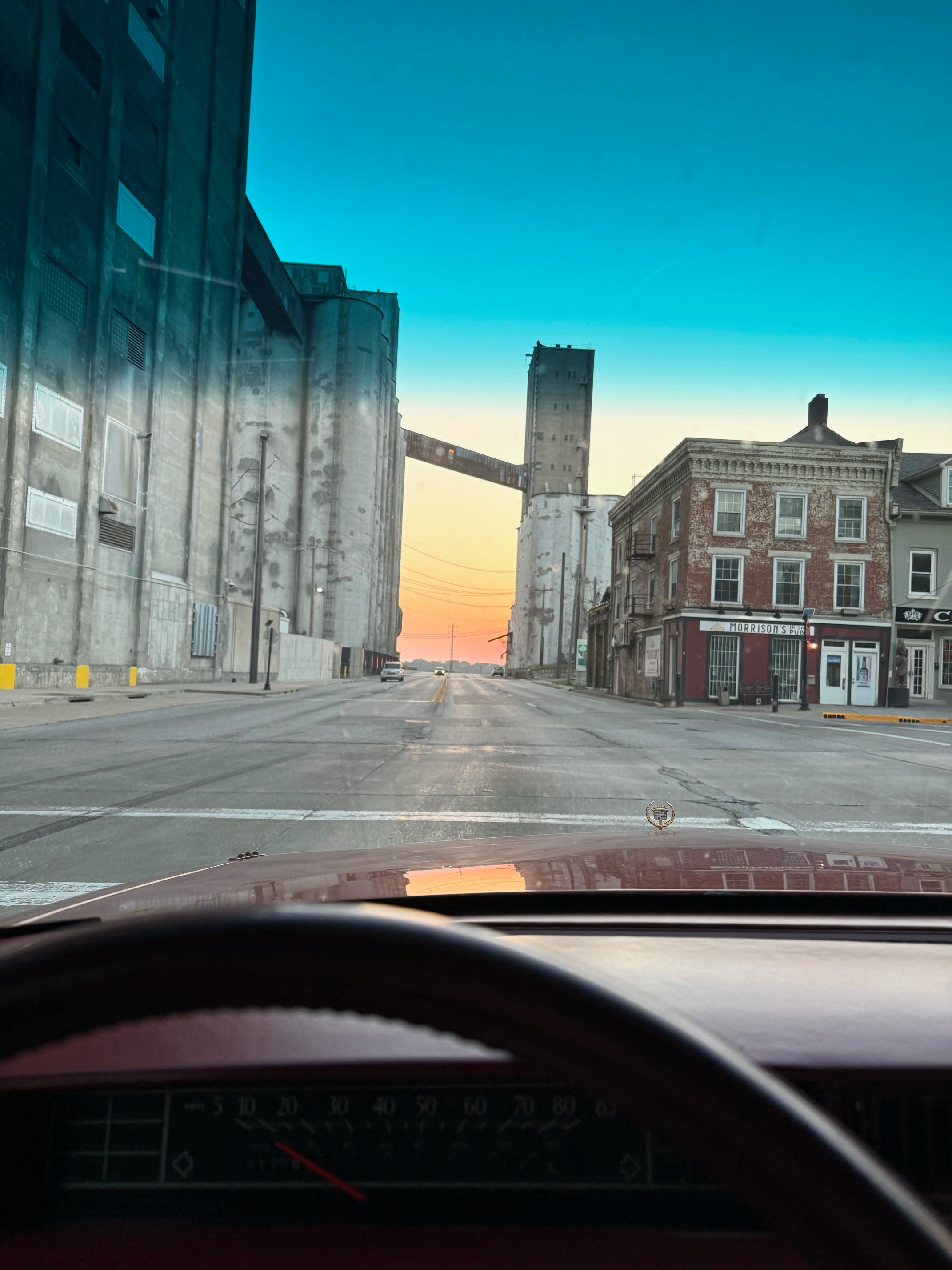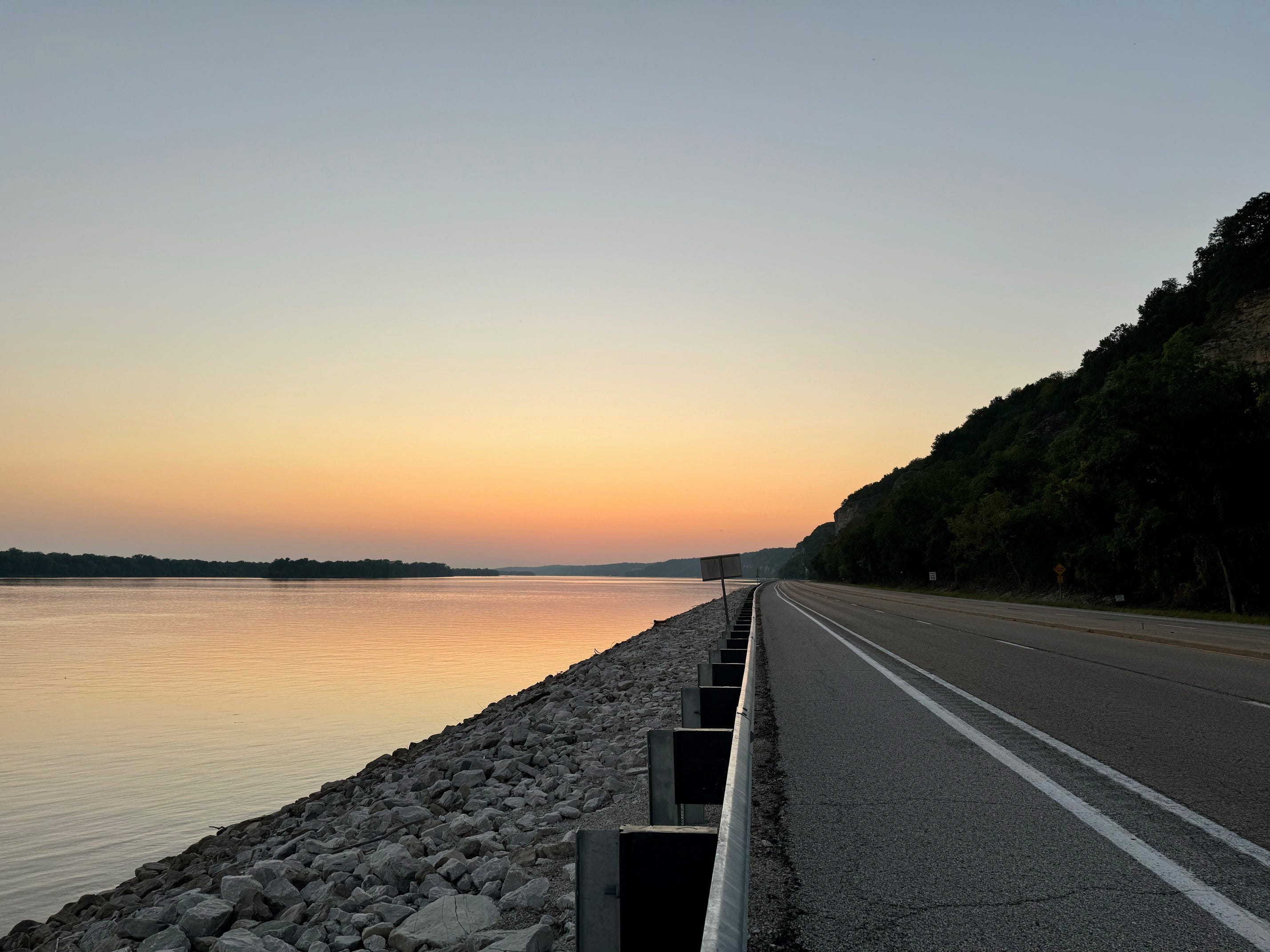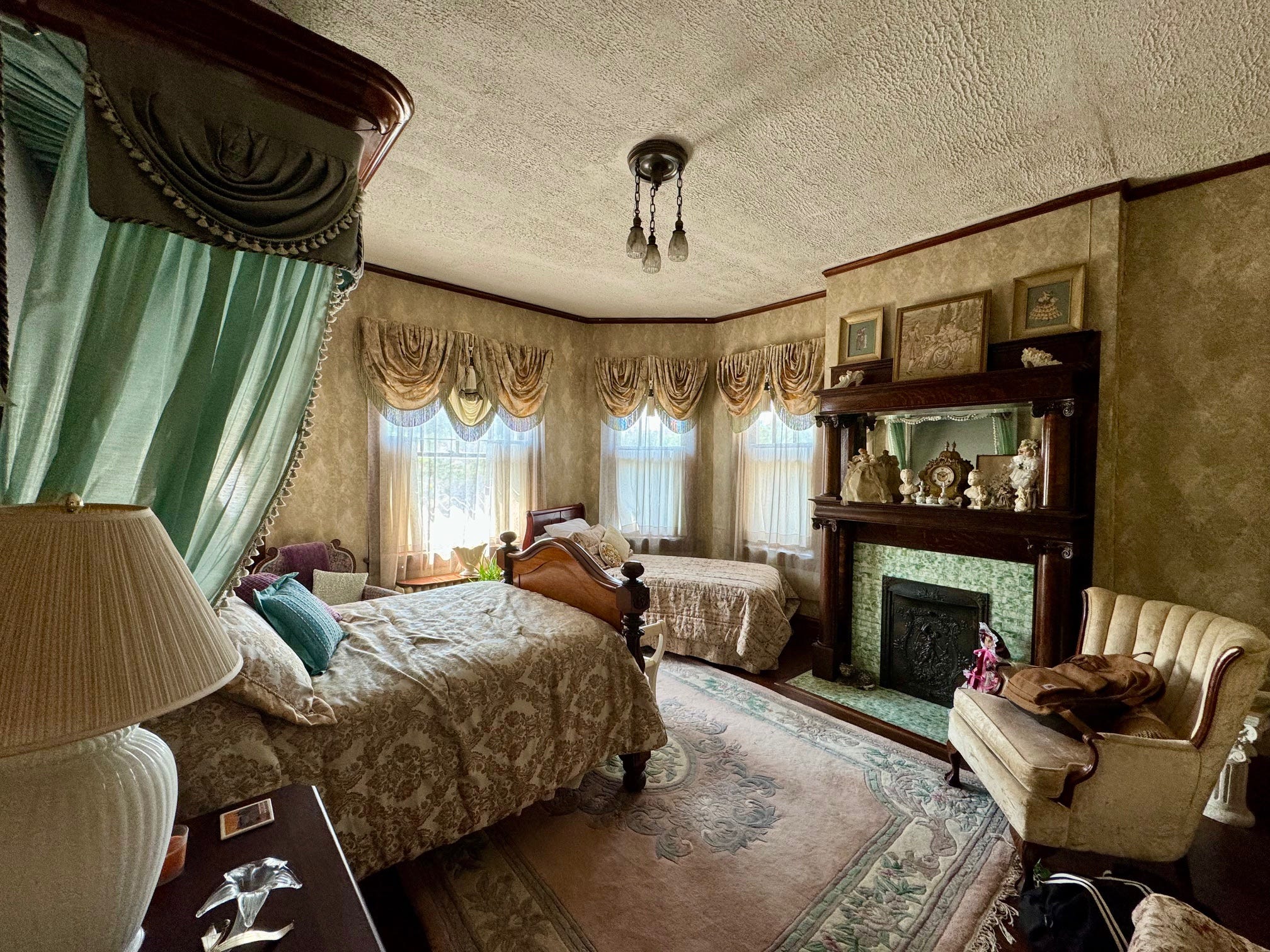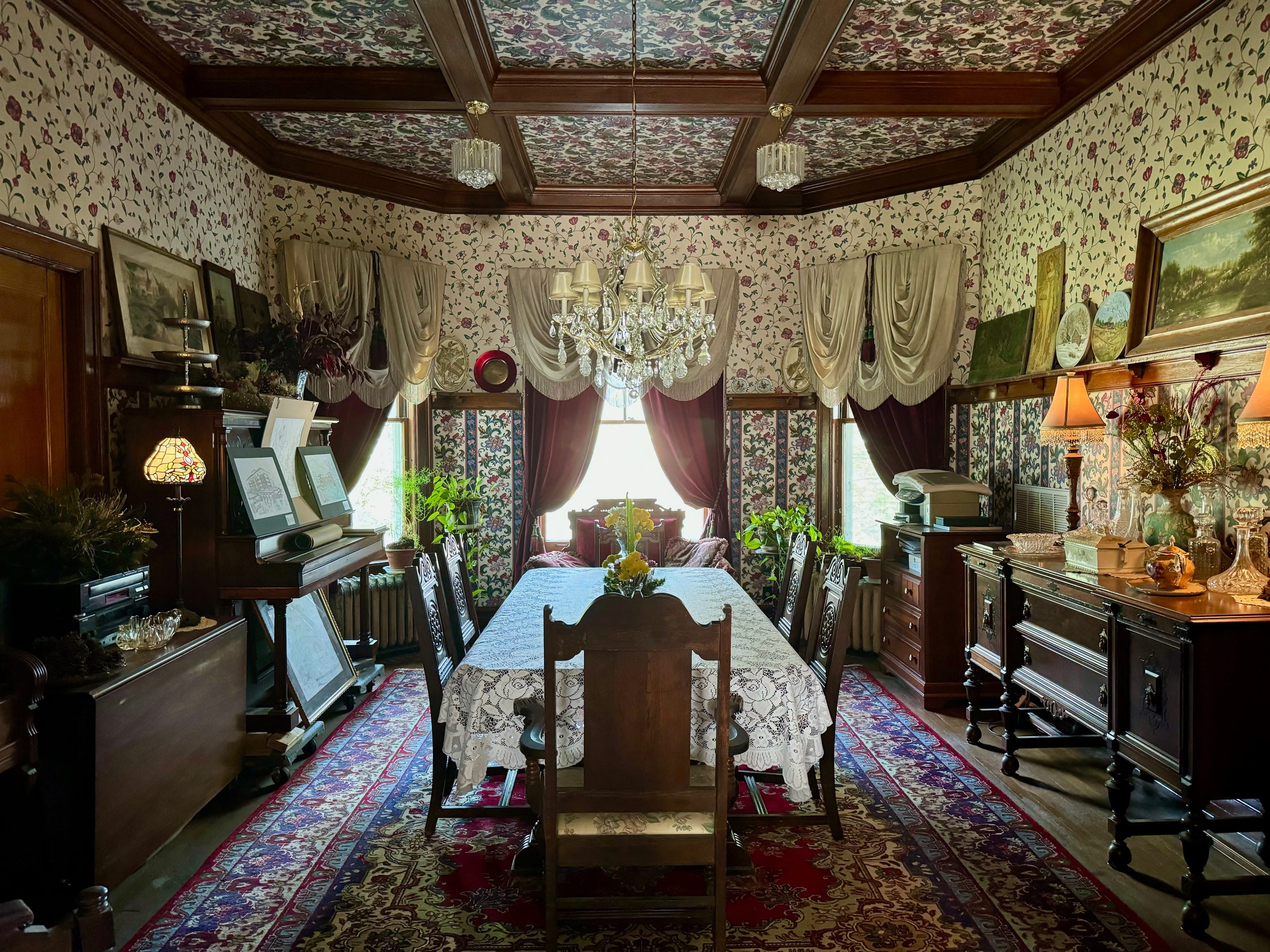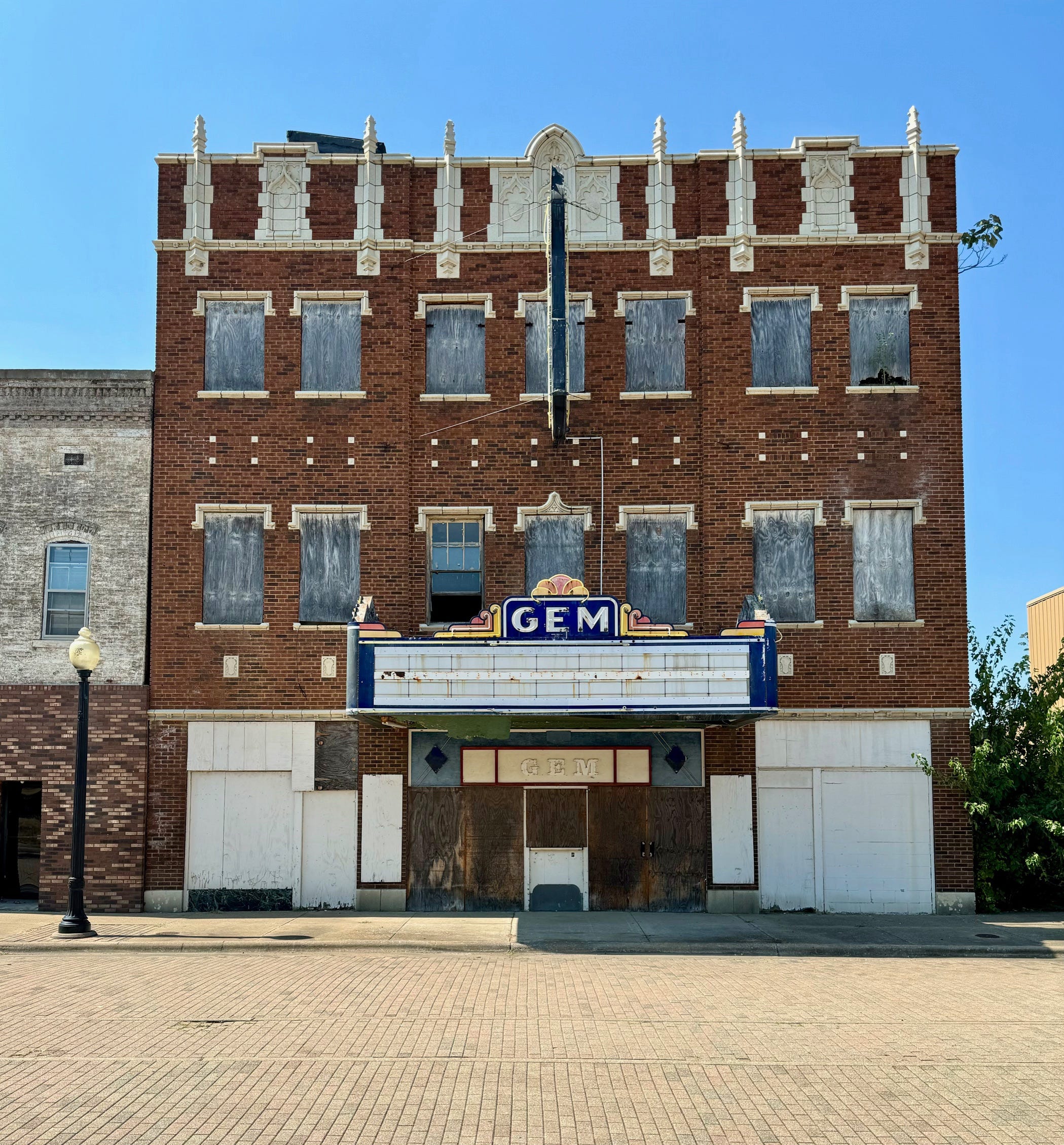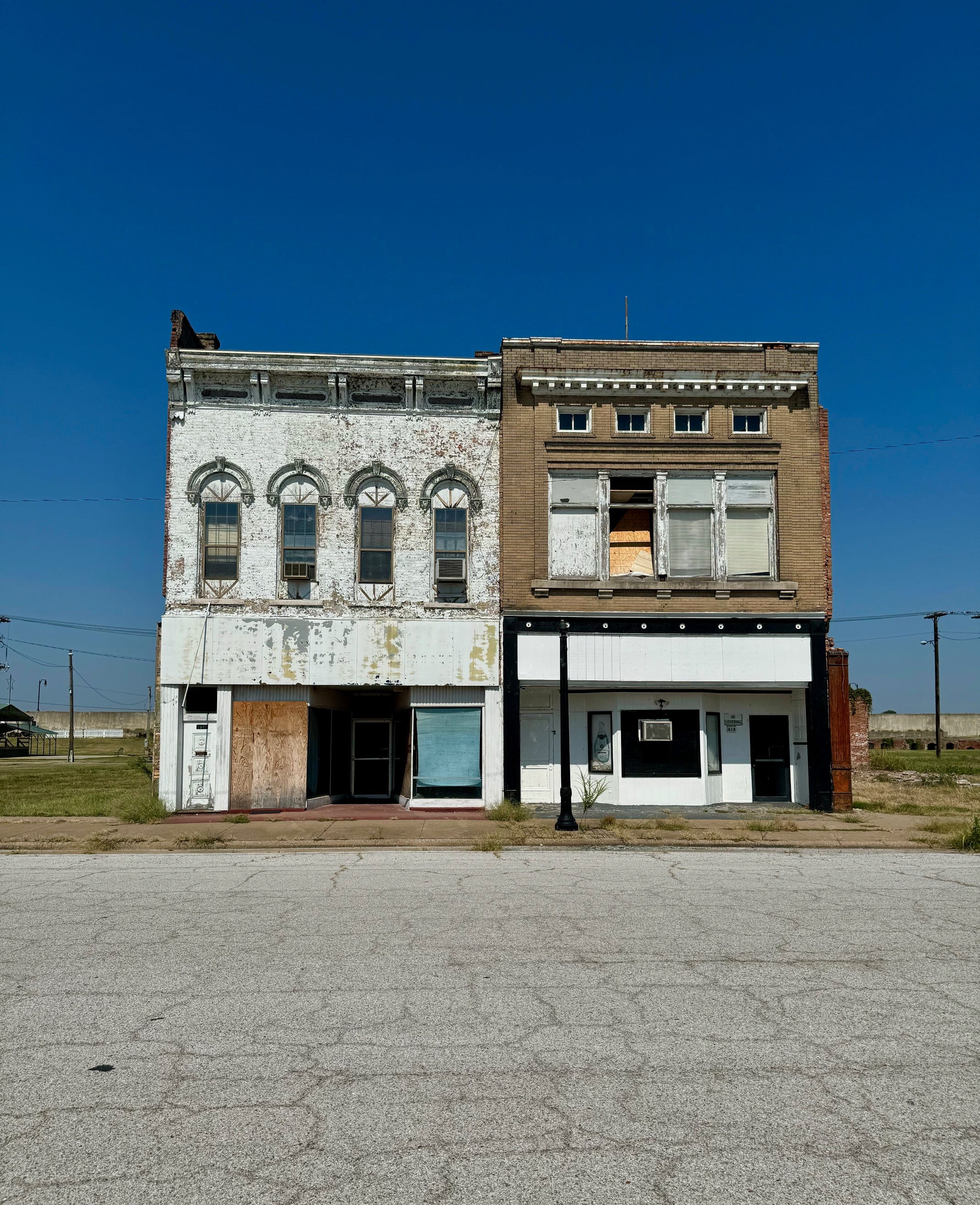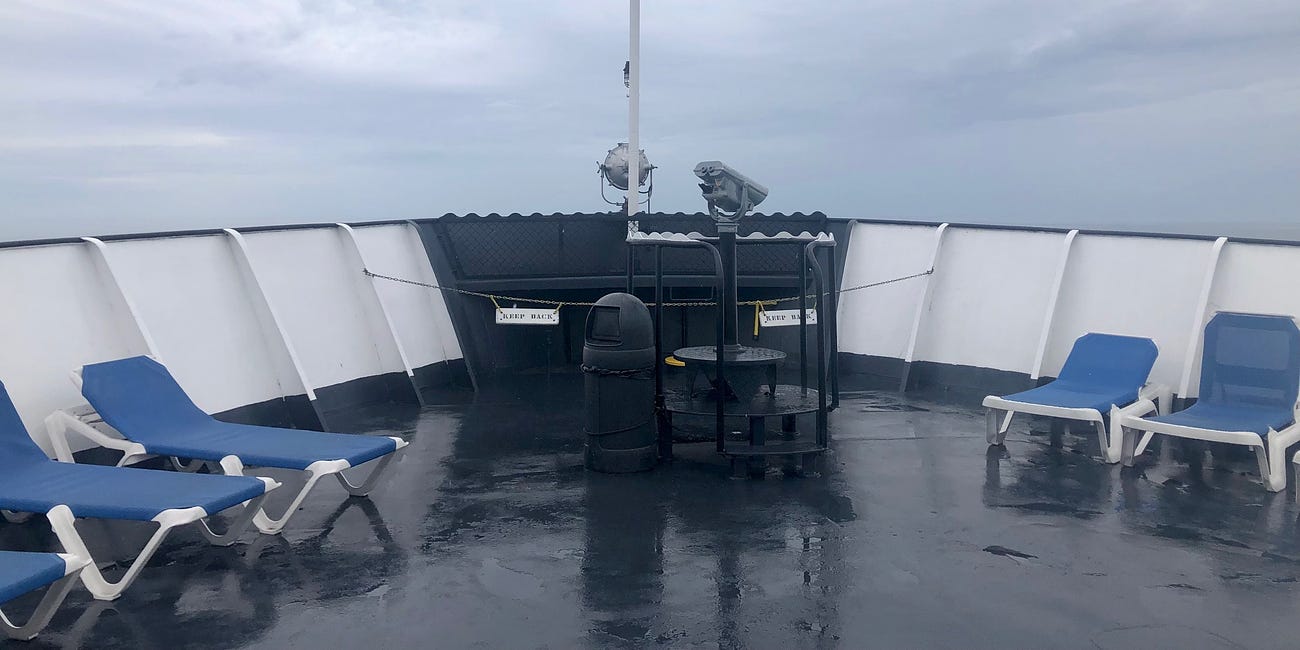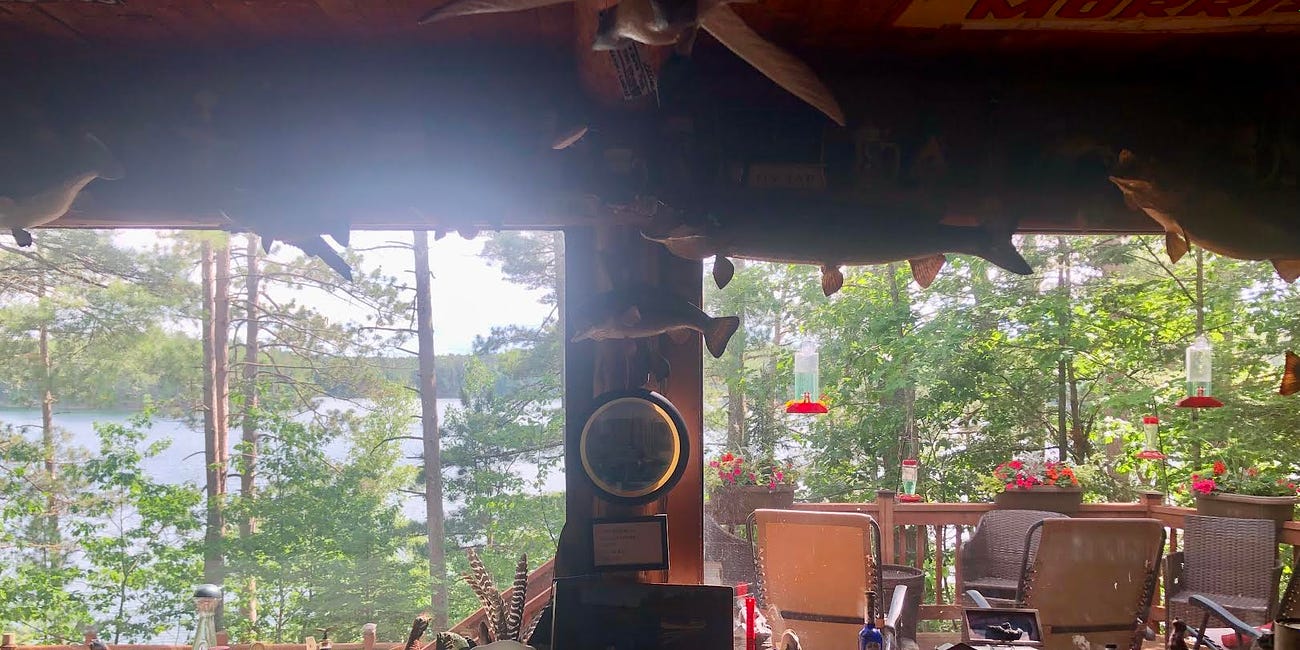How strange — I’ve lived in Illinois most of my life, and only really ventured south of the Chicagoland area, I mean with purpose, twice. Eighth grade we rode the bus to Springfield, our state capitol, with a stop for dinner at the Old Country Buffet; five years later, an appropriately dismal Greyhound to Champaign-Urbana for some party or another. I’ve ridden the Amtrak through cornfields and past shipping fulfillment warehouses of Kankakee, Mattoon, and Carbondale, wishing I were asleep or dead. I’ve been all through Wisconsin more times than I could count and driven the Great Lakes loop through the U.P. and back down Michigan, but my home state, the Land of Lincoln, was a total afterthought. Such an oversight would not fly on the Midwest Road Trip Special. There are places where the veil is thin, if you catch my drift. Many such places are said to exist along the Mighty Mississippi in southern Illinois. Old river towns like Alton, the largest settlement in Illinois for part of the 1800s, have spent the past 75 years falling to ruin. Alton, in particular, intrigued me; some call it the most haunted small town in the USA. “There's a powerful force at work in Alton that shaped this land thousands of years before humans ever set foot here,” said the Travel Channel’s Ghost Adventures in their two-part Alton special, “Curse of the Riverbend.” Exploring the Mississippi in 1673, French missionaries looked up in terror at a painting on the limestone bluffs — a giant, red-eyed bird with horns, fish scales, a tail and beard. Legend had it that war corpses gave the Piasa (“the bird that devours men”) a taste for human flesh, snatching victims in its talons and retiring to its cave. A port town in a free state on the border of a slave state, abolitionists and Confederate sympathizers both made their home in Alton. It was an Underground Railroad stop, hence the hidden chambers and secret passageways that still connect to homes. The notoriously foul Alton State Penitentiary, built in the heart of town in 1833, reopened as an even harsher POW camp. Confederate soldiers who’d caught malaria, dysentery, or smallpox at the prison were banished by the hundreds to nearby Sunflower Island to die. Locals reported hearing screams, loud weeping, and the thud of lockstep marching until the building was demolished in 1974. Meanwhile on the Mississippi, steamboats were catching fire, exploding, or vanishing entirely in the case of the Mississippi Queen, which disappeared without a trace in 1873. The biggest maritime disaster in U.S. history took place on the Great River in 1865, when the steamboat Sultana, packed with Union soldiers headed for St. Louis, exploded and sank near Memphis, killing some 1,800. (The Titanic killed 1,517.) Then there were the pirates, who trawled the river for families crossing westward with all their worldly possessions. I reached the Mineral Springs Mall by early afternoon, having left Chicago at dawn. Downtown Alton was empty, it being Monday and 95 degrees, as I passed the site of the last Lincoln/Douglas debate in the shadow of massive concrete grain silos. The waterfront stretched beyond: the confluence of the Mississippi, Missouri, and Illinois rivers up which empty barges crawled. The mall, considered among Alton’s most haunted locations, was once a grand hotel; now new-age bohemians sold incense and crystals here. I bought a soapstone owl from a shop called It’s Raining Zen, then read a poster in the hallway on the building’s best-known ghosts: “A woman named Pearl committed suicide by overdosing on sleeping pills. Some say she had second thoughts and tried to get up but it was too late and she fell. That is why when you go into the room she died in, it feels like you’re walking at angle.” Upon its opening in 1914, Alton’s Mineral Springs Hotel was the finest in the region: a five-story hotel and spa in the Italian Villa style, built above a “cure-all” hot spring and boasting the largest swimming pool in Illinois. It closed down in the 1960s, shabby and out of fashion, and when it re-opened in the 1970s as an antique mall, ghost stories began to circulate. In one, a girl named Cassandra drowns in the hotel pool; today’s shop owners at the Mineral Springs Mall know Cassandra as an orb who likes to play with marbles. Another ghost, the Jasmine Lady — a hotel guest who fell to her death down the stairs in 1925 — is identified by passing whiffs of her rancid jasmine perfume. “Southern IL isn’t even as nice as southern Indiana. It’s ass,” said a member of my best group chat when I mentioned where I was headed. “It’s one of the worst parts of the country. Just hardcore Christians, no natural beauty, awful food everywhere. You go through there to go somewhere else. It’s not even rust belt, it’s just this flat nothing.” Skill issue, I believe. Is it delusional to think that beauty, wonder and amusement can be found just about anywhere you look? As for food, there was no question that the Chi BBQ King would have a solid spot along the Great River Road. I pulled into the parking lot of Fast Eddie’s Bon Air, a century-old brick roadhouse with a seven-item grill menu and a claim to the title of the Midwest’s highest-volume bar for Anheuser-Busch products. The place was bumping the hot country hits of the ‘90s and ‘00s and simply packed with men: men shouting at each other over pitchers over Coors Light, tanned men in neon t-shirts fresh off construction jobs. I ordered a red dog, a brat and a beer; the men beside me bought my next one, plus a round of Vegas bombs. “Y’know the tallest man in the world lived here?” one of the fellows asked. Born and raised in Alton, Robert Wadlow stood 8’11” upon his death in 1940 at age 22, making him the tallest person in recorded history. His coffin, nearly 11 feet long, took 20 men to carry. “And he had a massive schlong,” another man added. “How do you know?” “My grandma said.” These men, sunburnt and vaping, were in their early 20s. “I guess we’re kinda stuck here,” the quiet one said with a shrug. “Last year I moved to Jersey, but now I’m just back here.” Later I realized what he meant was Jersey County, just up the Great River Road. The drive from Alton to Grafton takes you down that route, snaking between craggy limestone bluffs where the Piasa bird is still painted and the mighty river into which the sun was falling. At the B&B in Elsah (population 516), a piece of homemade carrot cake was waiting on my bed. Breakfast the next morning was sugary muffins and biscuits-and-gravy casserole cooked up by Connie while Gary poured the coffee. If I liked ghost stories, he said, I ought to visit Alton’s McPike Mansion, considered the most haunted place in Illinois. Once a 16-room Victorian home owned by the town’s mayor, an arborist and friend of Lincoln, it was abandoned in 1950 and scrapped apart by thieves who took the marble fireplaces, the light fixtures, the toilets. Recent visitors have witnessed orbs, shadowy figures and full-bodied apparitions, disembodied laughter, the scent of lilac perfume. I’d stopped by yesterday, I said, but it was closed. “There’s a gravesite in the back,” Gary drawled. “The Satanists robbed it last year.” It was three hours down the river to Cairo, the southernmost town in Illinois. “Don’t even think of speeding down there,” he warned me. “They’ll get ya. They got nothin’ else to do.” You pronounce the word like “KAY-roh,” though it’s named for the place in Egypt. A port town at the humid, flood-prone confluence of the Mississippi and Ohio rivers, Cairo’s population peaked at 15,000 in the early 1900s; some 1,500 live there today. Economic desperation combined with astounding racial violence in the century in between, from 1909’s demented lynch mob to the suspicious death of a 19-year old black soldier in 1967 that sparked days of shootouts and fire-bombs ultimately quelled by calling in the National Guard. Cairo resembled a war zone by the 1970s, with black residents and white vigilante groups stuck in a standoff. According to a Washington Post report, the city endured 170 days of sniper fire in 1969. No other schools would come to Cairo, so local sports teams played every game away. Rather than integrate the city, businesses simply closed. Black residents sued the city for refusing to allow them at the public pool; it became a “private club,” then they filled it with concrete. In 2016, Cairo’s scandal-ridden local public housing authority was overtaken by HUD, who declared its major housing projects uninhabitable. Rather than bring them up to code, the buildings were demolished. Its 400 residents were told to move elsewhere. Highway 51 will take you straight through “Historic Downtown Cairo,” which was pin-drop silent in mid-afternoon. The only spots not boarded up or crumbling into rubble were a handful of gas stations advertising video poker games and higher prices per gallon than Chicago, outside of which a few heads swiveled slowly as I drove by. At Shemwell’s Barbecue, one of maybe three restaurants in town, the only other car in the parking lot had “WASH ME” traced in dust on its back bumper. I sat five minutes at the counter alone until a woman emerged to take my order: a BBQ pork sandwich, which arrived in one greasy slice pressed between thin white bread. “Have a great day!” she said with pathos as I stepped into the heat, nearly screaming as a black butterfly, big as a bat, flapped audibly past. I ate the sandwich in the car; it tasted better than it looked. I’d planned to spend the afternoon taking photos of abandoned ruins, but the notion had begun to make me ill. Instead I headed for Mound City, population 497, where I’d booked a room for $85 in a 111-year old manor built (I’d later learn) atop the rumored remains of a 1,000-year old Native temple mound. The bed in which I’d sleep tonight survived the Civil War, so said the manor’s owner, a retired architect who’d moved here to restore decaying buildings in the old river town, once home to a naval depot and a major hospital in the war’s western campaign. He’d restored the empty Baptist church across the road, next to the studio where he wrote all day. I’m a writer too, I said. Did he have something I could read? He might, he told me, pouring two glasses of merlot and retreating to the antique-filled living room. I drank mine on the porch as the evening sun lit up the spiderwebs in the cottonwood trees. Besides the half-dozen kids riding bikes in silence, the block was dead. I smoked a cigarette with Mark, the manor’s only other tenant, here from Houston for ten weeks on electrical assignment. “This place is fucked,” he exhaled. “I just sit out here watching YouTube all night.” There were no bars in Mound City, no restaurants or grocery stores. “He’s alright, though,” he said, meaning the innkeeper. “Likes his whiskey.” “What’s he got in there?” a kid shouted from the street. “Furniture,” Mark called back. “What did you think?” In sweatpants and slippers in the darkened living room, the innkeeper was enraptured by a video on BitChute, a free-speech YouTube alternative. (Among its trending topics: “jesus” “vaccine” “freedom” “anime.”) “Would you like to see something that will blow your mind?” he asked me. Why, certainly. He refilled our wine glasses and pressed play on a video: “The Tartarian Empire: Full Theory Explained.” “We finally discovered the truth!” the narrator proclaimed. “After centuries of deception, we finally figured out that our mainstream history is a LIE!” He began to talk very quickly as Masonic imagery and close-ups of the dollar bill filled the screen. The theory, as far as I could gather, was that a great lost civilization near present-day Kazakhstan was erased from history. The cover-up had profound architectural implications, something to do with “mud floods,” the pyramids of Giza, and the 1893 Chicago World’s Fair, but we were 20 minutes in and I was starting to lose the plot. “There is an awakening coming,” the narrator said. “If you are brave enough to consider these ideas, and to spread them, the controllers will inevitably lose their grip. When the time comes, will you be brave enough to embrace virtue and enlightenment?” The innkeeper and I spent the next three hours this way, switching from wine to whiskey as he regaled me with his theories on art, religion, and the Second World War. He handed me a stack of papers before retiring to his room; he did not often share his writing with his guests, he said, but we were on the level. “A MASTER ARCHITECT, ARTIST, STATESMAN, RENAISSANCE MAN, HIGHLY DECORATED ARMY VETERAN & LEADER OF HIS PEOPLE,” the title read. I flipped through it in bed, praying that my gut was wrong on the manifesto’s subject, but there it was, a photo of Hitler on page three. I lay fitfully a while in the 200-year old bed, feeling much farther than 400 miles from home. We didn’t speak about the document at breakfast, where eggs, potatoes and toast were accompanied by jam from a nearby Amish farm. “Whatever leftovers you might have, I’ll feed to the stray kitties,” he smiled. It was time to get the hell up out of Mound City, Illinois. COMING SOON ON THE MIDWEST ROAD TRIP SPECIAL… THE 2024 WISCONSIN SUPPER CLUB AWARDS! PREVIOUSLY ON THE MIDWEST ROAD TRIP SPECIAL… You're currently a free subscriber to SCARY COOL SAD GOODBYE. For the full experience, upgrade your subscription. |
